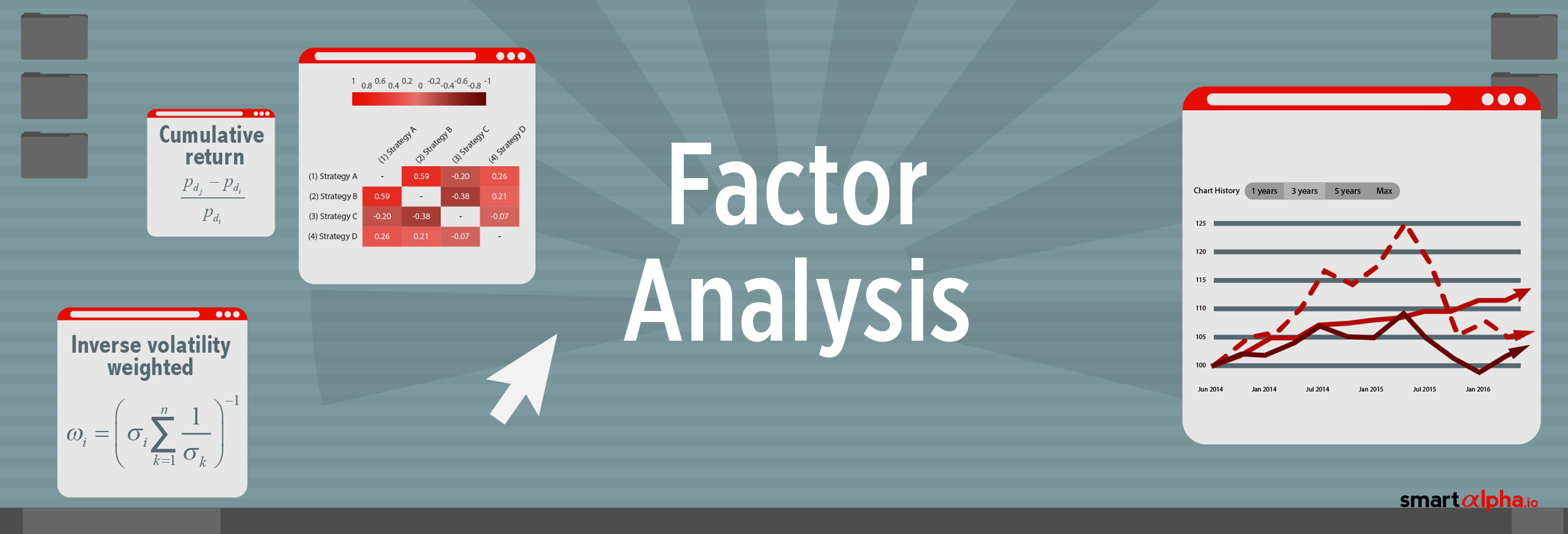
By analysing the underlying exposures of stocks, funds and strategies, investors can identify which factors are providing the best risk-adjusted returns. This process is called factor analysis, and allows investors to target the inherent risks which they believe will yield the best returns.
Conducting a factor analysis on a fund can explain whether its returns come from overall market exposure (relating to the market risk premium)
This is important as it is often difficult to tell why a stock or fund is performing better or worse than the market. In other words, this process helps to pinpoint the source of returns. Factors can influence the returns of passive index-tracking investments as well as actively-managed portfolios.
Smart beta
Factor analysis provides the foundation for semi-passive quantitative investment strategies like smart beta, an investment approach which uses rules-based methodologies to select stocks. These factor investing strategies aim to take advantage of market anomalies or risks which command higher risk premiums than the market (the market itself trades at a premium to risk-free alternatives).
Smart beta strategies, which are built on factor analysis methodologies, target certain risks in the construction of alternative indices – as opposed to buying into broader market exposure provided by traditional size-based indices. For example, a smart beta exchange-traded fund (ETF) with a momentum bias tracks the performance of stocks which are reflecting high momentum. The performance of the ETF would be measured against a traditional index like the S&P 500.
The smart beta model is implemented through proprietary indices – otherwise known as “self-indexing”.
Popular factors
Common factors, many of which have been proven to yield superior risk-adjusted returns by statistical analyses, include the underlying value element found in many stocks. This factor is based on the notion that undervalued stocks tend to outperform overvalued ones in the long run.
Another popular factor among both active fund managers and quantitative strategies is quality. But some argue that this is a subjective factor which is difficult to define, and so is better suited to the active-management model which makes use of fundamental analysis and manual stock selection.
The size factor, meanwhile, suggests smaller stocks typically perform better than large ones over time, though the reason for this is often debated. Some analysts believe greater returns stem from smaller stocks’ greater risk premiums, due in part to information uncertainty and hence more difficult stock analysis and due diligence processes.
The low volatility factor, on the other hand, targets less volatile investments which outperform on a risk-adjusted basis, while the momentum factor suggests stocks with momentum tend to outperform those which have fallen out of favour.
Investors and researchers have identified a number of other factors believed to be behind greater long-run returns.
Factors, or individual return drivers, tend to be relatively uncorrelated from one another and so they perform under different market conditions and cycles. As such, a multifactor approach to portfolio construction can smooth returns and control volatility.
While a diversified portfolio model in the traditional sense would include exposure to both equities and bonds, a factor investment strategy can be diversified by blending styles which react differently under different market conditions. Instead of diversifying an equity portfolio by including bonds and cash, a small-cap fund can include large stocks so as to diversify risks within a portfolio. Similarly, another method is to combine growth and value strategies.
In fact, a number of market commentators have argued that the traditional portfolio model of diversifying across equities and bonds is not as diversified as previously thought, since these asset classes often move in the same direction during falls and rises in the market.
By honing in on risk components, particularly those which move in opposite directions amid changing market conditions, some proponents believe the factor analysis model supports more diversified portfolios than traditional methods. Essentially, this highlights a shift from diversification across asset classes to diversification by underlying factors.
Factor analysis methods have been used for decades, with early research attempting to decipher stock returns by identifying underlying investment characteristics. The value factor, for example, was identified as far back as 1934 in a paper called Security Analysis, by Graham and Dodd.
A factor-based strategy can be implemented in a number of ways, including using leverage or short selling a fund or index, as is the case with risk premia strategies. The risk premia model targets absolute returns through a basket of long-short investments. An alpha overlay strategy meanwhile helps to diversify a fund by targeting different underlying factors.
Long-only proprietary indices can single out individual factors that are behind better risk-adjusted returns.


